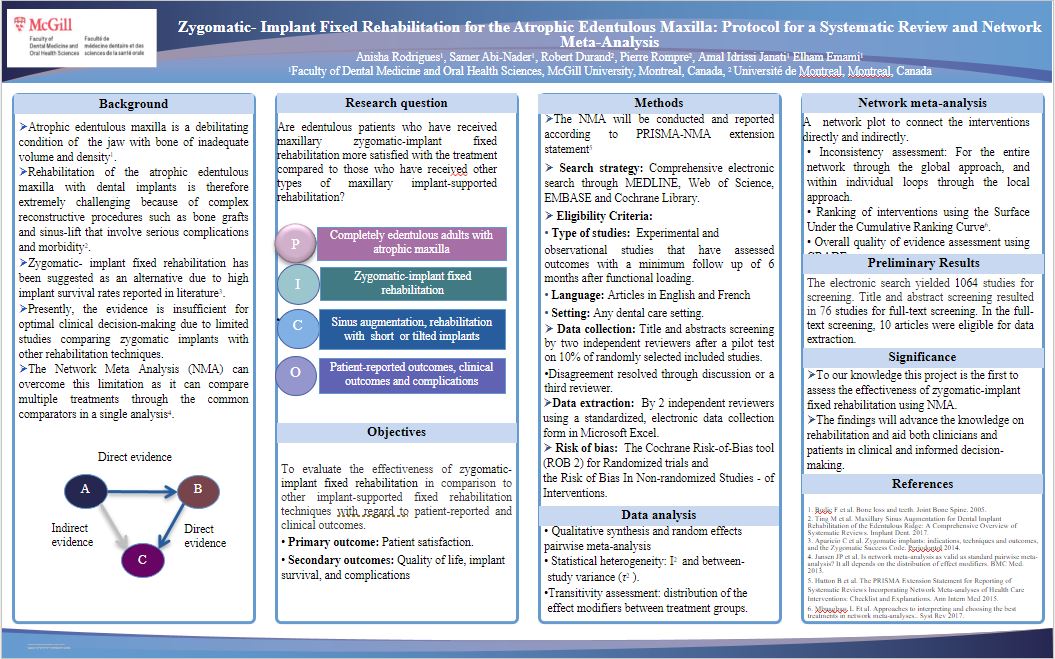Zygomatic-implant Fixed Rehabilitation for the Atrophic Maxilla: A Network Meta-analysis
Authors’ name: Rodrigues A1, Abi-Nader S1, Durand R2, Rompre P2, Janati AI1, Emami E1
Affiliation of the authors: 1Department of Dental Medicine and Oral Health Sciences,McGill University Montreal, Canada2 Université de Montréal, Montreal, Canada
Background: Atrophic edentulous maxilla is a debilitating condition caused by progressive and irreversible bone resorption following tooth loss. Its rehabilitation with dental implants is extremely challenging without complex reconstructive procedures that involve serious complications and morbidity. As an alternative, zygomatic-implant fixed rehabilitation (ZIFR) has been suggested. However, existing body of evidence does not allow optimal clinical decision-making due to limited number of comparative studies. The existing systematic reviews and meta-analysis compare two interventions in head-to-head trials. It would be beneficial if multiple treatments could be compared through common comparators in a single analysis. This can be achieved through a network meta-analysis (NMA) that can combine direct and indirect evidence through a network of comparisons to obtain relative treatment effects.
Objective: To evaluate the effectiveness of ZIFR in comparison to other implant-supported fixed rehabilitation techniques with regard to patient-reported and clinical outcomes.
Methods: An electronic search will be conducted in MEDLINE, EMBASE, and Cochrane Central Register of Controlled Trials. Randomized and non-randomized clinical trials comparing
implant-supported fixed rehabilitation modalities in edentulous adults with atrophic maxilla will be included. Patient satisfaction is considered as the primary outcome. Secondary
outcomes include quality of life and clinical outcomes such as implant survival. The risk of bias will be assessed using the Cochrane Risk-of-Bias tool and the Risk of Bias In Non-randomized Studies–of Interventions. Pair-wise meta-analysis will be conducted, followed by NMA using a network plot. Transitivity and consistency of the network will be analyzed.
Interventions will be ranked using surface under the cumulative ranking curve. The level of evidence will be assessed using GRADE.
Preliminary Results: The electronic search yielded 1064 studies for screening. Title and abstract screening resulted in 76 studies for full-text screening. In the full-text screening, 10 articles were eligible for data extraction.
Conclusion: We expect to conclude that ZIFR could better satisfy patients with atrophic maxilla with similar implant survival and success rates compared to other techniques.
Significance of the results: This study will be the first to assess the effectiveness of ZIFR using NMA. The evidence obtained will aid clinical decision-making.
